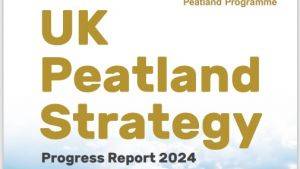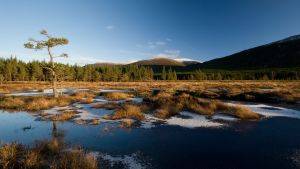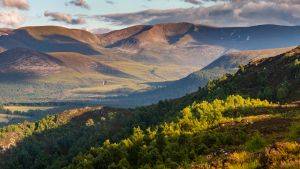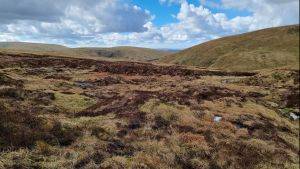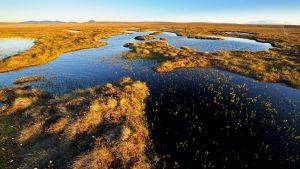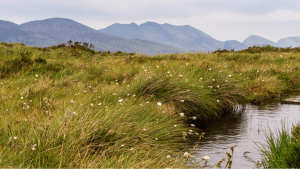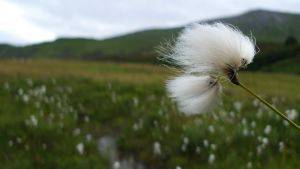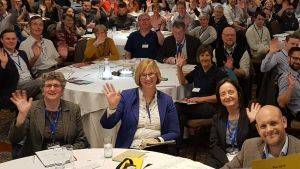May Moss
Introduction
In 2009, working with partners and funding from the SITA Trust, the Forestry Commission started restoration work on May Moss, a blanket bog covering about 150 ha at the head of the Yorkshire Derwent. Between 1919 and 1983 the United Kingdom's forest policy was targeted at creating a strategic reserve of timber following centuries of woodland destruction which had reduced forest cover to 5%. Many forests were created on Britain's peatlands. Peat was ploughed and drained in many places, including May Moss. However, awareness of the value and vulnerability of peat and its associated habitats has greatly increased in recent years, resulting in an urgent programme of work to halt and repair damaged areas.
Description
May Moss is situated in the North of England in the North York Moors National Park, an area dominated by dry, upland heath with old pastures and lime-rich grasslands. Much of the upland area is part of the North York Moors SSI, which is also an SPAfor birds, such as merlin and golden plover. North of the National Park runs the River Tees and its estuary, while to the south is the Vale of Pickering, an area undergoing partial wetland regeneration. Currently, May Moss is partially drained and planted with conifers. With peat up to 6 metres deep, the area is a mosaic of dwarf shrub and blanket bog with common heather (Calluna vulgaris), cross-leaved heath (Eirca teralix), cotton grass (Eriophorum sp), cranberry (Vaccinium oxycoccos) and the only known population of bog rosemary (Andromeda polifolia) on the North York Moors. Although severely damaged due to the intense ploughing and draining, the 150 ha blanket bog is also home to populations of adder and the large heath butterfly.
Project Aims
The volunteers working on this project have a long-term vision for May Moss and plan to monitor the vegetation for decades to come, enthusiastically learning and implementing the skills needed. Alongside these committed volunteers, the data gathered from frequent monitoring of the habitat’s climate and hydrology ensures that our knowledge and understanding of blanket bogs, such as May Moss, will continue to increase.
Restoration Delivered
The peat restoration work begun at May Moss provides a model for other peat restoration on other forest sites and has provided both Forestry Commission staff and contractors with a new set of highly transferable skills. With careful management, this habitat will be able to continue producing significant amounts of timber, whilst at the same time being a major contributor to landscape-scale ecosystem services.
Site Activity
In 2009, the Forestry Commission began work to restore the 'lost' half of May Moss by clearing conifers and blocking drains. Intensive work finishes in 2012 when more than 70 ha of peat will have begun the process of recovery. Using a range of different restoration methods, the Forestry Commission overcame the practical difficulties of tree removal by implementing a combination of felling and mulching or pulverising. Drains have been blocked with peat 'plugs' and timber weirs and, finally, a monitoring programme has been put in place to better follow and understand the recovery process. Thanks to North York Moors National Park Volunteers and P.L.A.C.E (People, Landscape And Cultural Environment of Yorkshire), annual vegetation surveys have been carried out on May Moss for over 40 years. This data will now be complemented by additional recordings of climate and changes in hydrology being collected by Liverpool University, a new project partner.
Project Name: May Moss
Organisation / Lead partner: Forestry Commission
Location: May Moss, North York Moors National Park
Approximate area covered: 69 ha
Conservation Status: Site of Special Scientific Interest (SSSI), National Park (NP)
Predominately: Upland
Peat Habitats: Blanket bog

